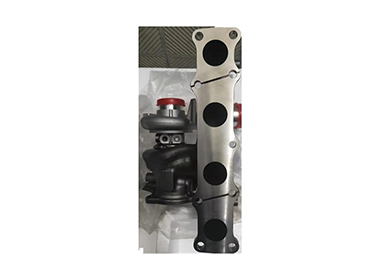Jul. 20, 2020
Correct maintenance and driving can not only extend the service life of the vehicle but also help improve the oil and fuel economy. TOYOTA Alternator supplier shares this article for you.
1. Preparations for starting the engine
1) Check whether the parking brake valve handle is tight
2) Put the gear lever into the neutral position
For the National III engine, the engine will not start when the transmission is not in the neutral position.
2. Starting the engine
1) Turn on the main power switch, confirm that the shift lever is in the neutral position, and the hand brake is in the braking state.
2) Insert the start key, turn the start key to the driving position "ON", the charging indicator, and the oil pressure indicator is on. Turn the start key to the position "STRAT", the engine starts. After the engine runs smoothly, the indicator light goes out.

Turbo Chargers For Cars
Don't suddenly increase the throttle after starting.
3. Precautions for driving
1) Avoid overspeeding of the engine When driving downhill, pay close attention to prevent the engine from overspeeding. Especially when shifting into a low gear, the engine is prone to overspend.
2) If the truck is driving and finds unusual noise or smell, stop and check the cause of the fault.
3) During driving, when the indicator lamp or instrument indicates an abnormality, stop, and check the cause of the fault.
4) Avoid unnecessary sudden acceleration and emergency braking.
5) Do not put your feet on the clutch pedal when driving, otherwise, the clutch will be semi-detached, which will cause premature wear of the clutch friction lining.
4) Avoid unnecessary sudden acceleration and emergency braking.
5) Do not put your feet on the clutch pedal when driving, otherwise, the clutch will be semi-detached, which will cause premature wear of the clutch friction lining.
6) Before shifting from a forward gear to reverse gear, or from reverse gear to forwarding gear, the vehicle should be completely stopped.
7) When going uphill, the Mercedes-Benz truck should be put on a low gear in advance before the engine starts to be stressed to avoid engine overload.
8) When going down a long slope, put in a lower gear and use engine brake, foot brake, and exhaust brake together. Simply using the foot brake continuously may induce the brake to overheat and cause the brake to fail. Braking on rainy days is prone to skidding, and exhaust braking can achieve good results.
Note: When the transmission is in the neutral position, do not use the exhaust brake to prevent the engine from stalling and accidents.
9) When driving over shallows or puddles, you need to pay special attention, otherwise, water will enter the air duct and cause serious damage to the engine. After crossing the river, check for water in the lubricating oil of the engine, gearbox and rear axle. If water is found, it should be drained and filled with the specified gear oil.
10) Be especially careful when driving in heavy rain or after crossing shallows. Because the wet brake may temporarily reduce the braking force. After crossing the river, you can step on the brake pedal several times to dry the brake shoes.
4. Parking
The engine should gradually reduce the speed and load before stopping the car after a long period of heavy load or high-speed operation, and it must be operated at idle speed for 3 to 5 minutes so that the temperature of the diesel engine parts can gradually and evenly cool down. In this way, the turbo chargers for cars can rotate at a low speed, avoiding the high-speed operation of the turbocharger under the condition of non-oil pressure after parking, and damaging the bearing and oil seal, so as to extend the turbocharger for OEM Turbo chargers for trucks factory
.。
Navigation
Name: Carrie Zhou
Tel: +023-68886580
WeChat: 0086-13650592877
E-mail: carrie@autopartstf-ws.com
Skype: transfortune
WhatsApp: +86 136 5059 2877
Homepage: www.autopartstf-ws.com